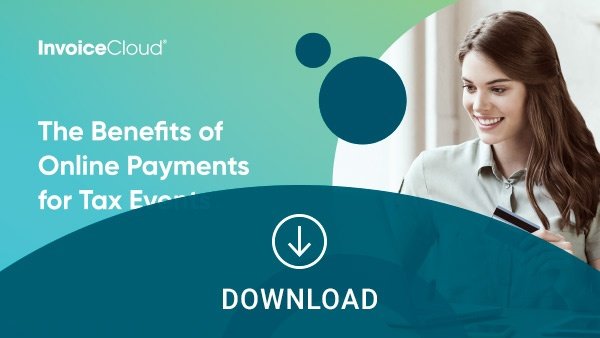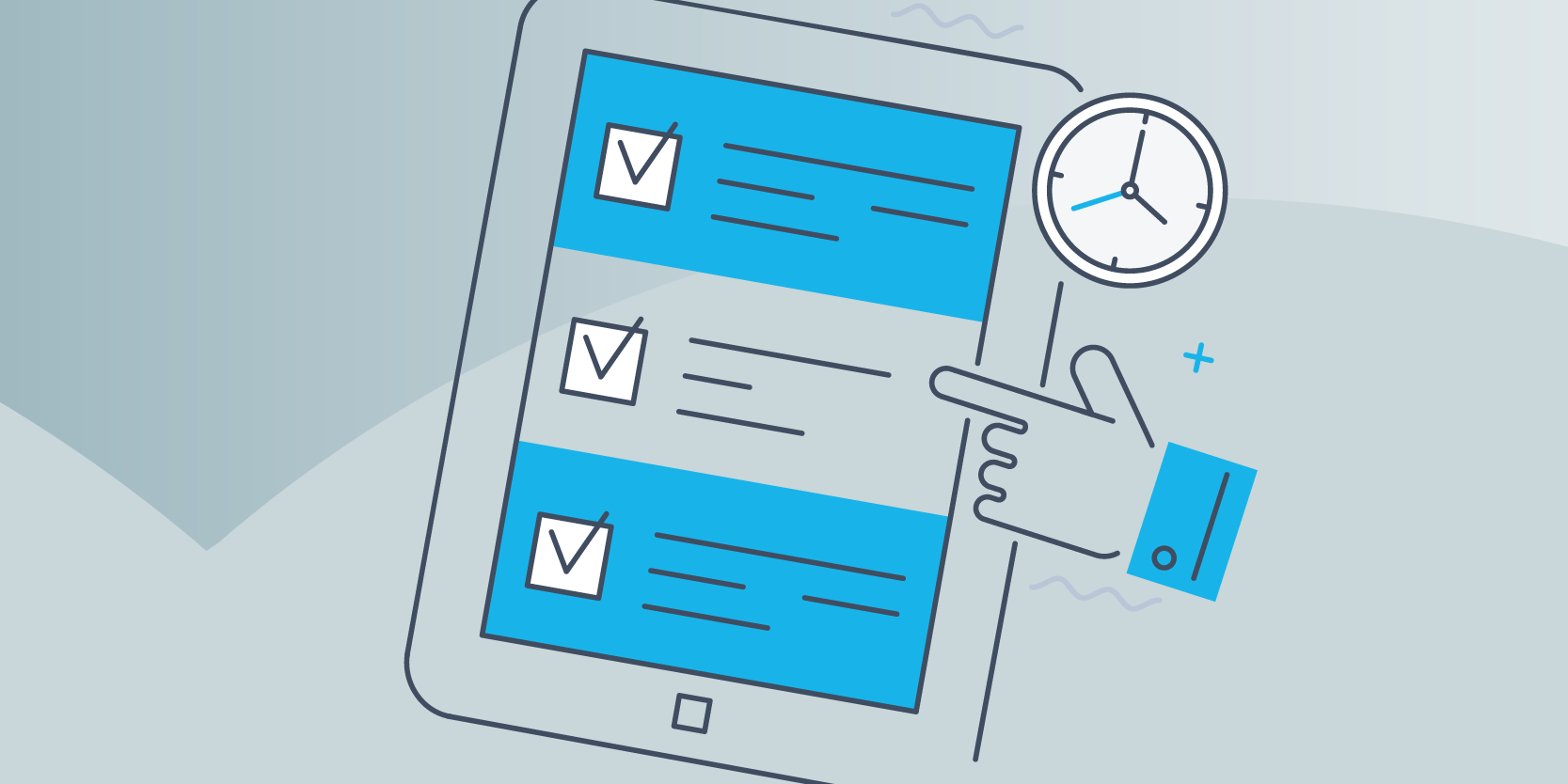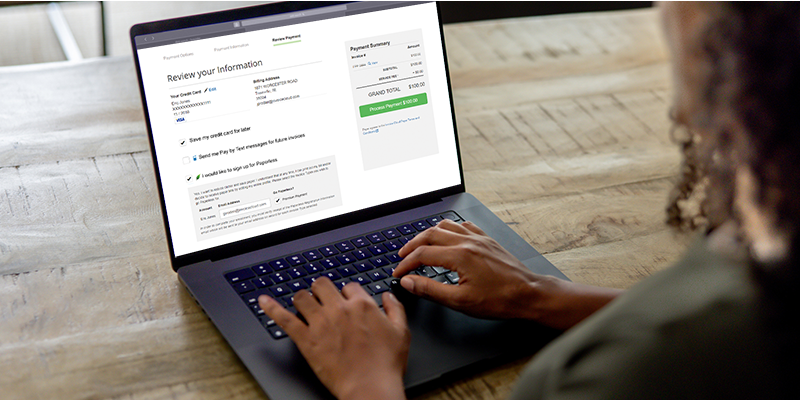3 Tips for Your Easiest Tax Event Ever
 Patty Melton
Patty Melton

Unlike many sectors, tax organizations know (roughly) how each year is going to look for their team. And while these annual or bi-annual tax events are expected and planned for, they still require tremendous amounts of attention and resources. Beyond that, the delicate nature of manual processing means that even one error can disrupt internal processes or negatively impact customer satisfaction rates.
So, what’s the key to keeping your head above water before and during these tax events? Taking a more proactive, technology-driven approach that can help reduce manual efforts and spread collections out over the course of the tax period.
As your team prepares for the first tax event of 2021, here are a few tips to make that event – and, hopefully, all future events – easier than ever.
3 Tax Event Tips
1. Utilize customer communications to drive earlier payments
It almost goes without saying, but most tax events can be improved by encouraging payments earlier in the event’s run. Receiving an influx of payments earlier in the tax season (rather than right before or on the due date) can have an incredible impact on your organization. Call volumes and in-person traffic become more sparse and less overwhelming, which means your organization won’t have to hire short-term employees just to prepare for a major rush at the end of each event. The time and money saved from these efforts can be substantial.
Of course, this is much easier said than done – tax payments are a much less frequent occurrence than, say, paying a monthly utility bill. Therefore, the likelihood of delayed, forgotten, or simply delinquent payments is much higher.
That’s where customer communications come into play.
Utilizing electronic payment reminders (via email, text, etc.) is one of the best tools your organization can use to encourage on-time, or even early, tax collections. For example, Invoice Cloud enables billers to communicate directly with payers using outbound campaigns, which allows billers to send personalized communications depending on the payer’s geographical location and more.
These messages are also key for driving customers to pay through your online channels, which will speed up your collection process and save your team from the expensive and time-consuming task of manually processing payments.
Encouraging billers to use payment reminders that are frequent, personalized, and drive towards online payment channels is just one reason Invoice Cloud’s online payment platform drives 2 to 3 times the industry average for online payment adoption rates.
2. Expand to omni-channel payment options
Clearly, driving customers to online payment channels is a beneficial move for your tax organization. Who among us doesn’t want to slash in-person traffic and conserve resources? Especially during a hectic tax event.
To get customers to consider or commit to making online payments, it’s imperative that your organization provides optimized omni-channel payment options.
Omni-channel refers to the ability to tie customer experience touchpoints together across multiple channels, such as online, on a mobile device (i.e., pay by text), or over the phone. The difference between omni-channel and multi-channel is the ability to provide a consistent experience from one channel to the next. With omni-channel features, a customer can begin their payment on the phone and pick it up later online without losing context.
When it comes to payments, omni-channel is the pinnacle of convenience. It’s all about allowing your customers to pay when, how, and where they want. The more payment options your organization can provide, the more likely your online adoption will skyrocket – bringing along all the benefits of higher adoption, like lower costs, less in-person traffic, and more.
Plus, omni-channel options take your user experience to a whole new level. Your payers will be thrilled about the expanded payment options and the frictionless user experience your organization is providing, leading to overall higher rates of customer satisfaction.
3. Drive online adoption with paperless billing
Paper bills may feel like an entrenched aspect of the tax event experience – but we can’t overlook the organizational funds spent printing and mailing these materials. Not to mention the bandwidth required to physically send out bills and manually process the returned payments.
With paperless billing, tax organizations can send digital bills (in conjunction with paper bills, if required by law) to drive more online payments while simultaneously cutting costs and saving employee time.
Digital bills are also helpful for organizations that send more than one bill on a semi-annual or quarterly basis (property taxes are a great example of this).
If your organization sends multiple bills at once, there is typically a long lead time between when the bill is sent and when it’s due – making it easy for customers to forget or miss these additional payments. E-bills are the most direct and cost-effective way to remind customers of these payments and improve your collection efficiencies.
To truly drive online payment adoption using paperless bills, your organization must engage customers throughout the entire billing process.
For instance, if your organization is legally required to send paper statements, include a message on the bill itself, a bill insert, or a short ‘teaser’ message on the bill envelope to let customers know about online payment options. Including the payment portal URL on the bill also provides an easy way for payers to access the payment site.
On your organization’s website, make sure to include clear language and buttons throughout, pushing customers to enroll in self-service routes like paperless billing or automatic payments (AutoPay).
AutoPay, in particular, is an ideal way to drive consistent online payments for your organization. With this self-service function, customers can easily save payment information and avoid logging in to make future payments. From a billing standpoint, removing this barrier is an easy way to encourage e-adoption. From the payer perspective, self-service options like AutoPay save customers a significant amount of time and offer optimal convenience. This helps to create the kind of frictionless payment experience that modern consumers expect and can often boost customer satisfaction rates.
James City County improves collection efficiencies by driving adoption
James City County was in search of an innovative EBPP solution to help their tax office adapt to rapidly changing customer expectations and to improve their collection efficiencies.
After a seamless integration with Invoice Cloud, James City County saw a 372% increase in online payments, while their mailed-in or in-person payments were slashed by 50%.
“The Invoice Cloud platform helped us cut mailed and in person payments in half,” said Jennifer Tomes, Treasurer of James City County. “In fact, it decreased mailed in payments so much that we never fell behind on processing these payments in a single day in the past cycle — a first in my 20+ years of processing payments.”
Watch the video below to see the full results of James City County’s partnership with Invoice Cloud.
Tax events can be overwhelming and costly ventures – but they don’t have to be. Your secret weapon is finding the right EBPP provider. Choosing the right platform can help your organization increase early and on-time collections, cut down staff workloads, reduce in-person traffic, cut costs, and much more.
To learn more about how Invoice Cloud has helped tax organizations like yours, schedule a demo today.



